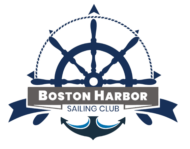ASA CERTIFICATION EXAM STUDY GUIDES
This page also may be downloaded as a RICH TEXT FILE.
ASA 101 BASIC KEELBOAT EXAM BKB
The Basic Keelboat written exam contains 16 questions, some of which have multiple sections. A Safe Boating Exam is incorporated in this test which meets the safe boating requirements of states which require it. The written exam can be completed in 45 minutes. The onboard exam covers the fundamentals of sailing practice and maneuvers and takes an hour on the water using the soling. This exam may be given with the Coastal exam because of the sailing overlap.
Recommended study text: SAILING FUNDAMENTALS/ASA SAFE BOATING MANUAL
Link to ASA web site: Basic Keelboat Sailing Standard (101)
- PARTS OF THE SAILBOAT: There are numerous questions which ask you to identify the parts of a boat and the sails. You must match certain parts of the boat such as the running and standing rigging, the cunningham, spring/breast lines, padeyes and halyards with their function.
- TERMINOLOGY: You will be expected to know the principal definitions relating to sides of the boat, windward and leeward, fore and aft, etc., match certain actions or parts of the boat with a related description, such as heel, jibing, tacking, etc. There are a number of sailing diagrams which require you to match what the boat or boats are doing with a list of possible answers, such as luffing, or being the windward or leeward boat.
- RULES OF THE ROAD: There are 10 questions which require you to interpret the rules of the road with respect to a series of diagrams involving both powerboats and sailboats, including one question about traffic separation zones.
- SEAMANSHIP: Several questions ask you to match the name of a knot with its purpose, and another question asks you to choose between a number of appropriate and inappropriate actions to take if someone falls overboard. Anchoring technique. PASSING GRADE IS 80%
- ONBOARD EXAM: You will be tested on using the PFD, making a safety equipment check, hoisting the sails properly, leaving and returning to a mooring under sail, proper winch techniques, sailing the points of sail as skipper and crew, tacking and jibing as skipper and crew, heading up and bearing away, luffing up, stopping, steering, sailing by the lee, and picking up a man overboard. The boat must be put away correctly including lowering and stowing sails, securing the boat and gear. You must be able to tie the bowline, figure 8, clove hitch, reef or square knot and a round turn with two half hitches. PASSING GRADE IS 100%.
- SAFE BOATING EXAM: There are 30 questions. Some questions match boat types with related descriptions, regulatory questions relate to capacity plates, intoxication levels, accident reporting periods, disposal of plastics, garbage, discharge of oil, registration numbers, safety equipment, crew capacity limits, meaning of sound signals, some lighting questions. A short navigation section asks you about sources of navigation information and how to pass certain buoys. There are 2 questions on anchoring and one on fires. PASSING GRADE IS 90%.
